Kurukshetra Summary: April, 2024 – Tourism: Enriching Rural Development
1. Rural tourism: catalysing the multifold developments in rural India
Introduction
- Rural tourism in India is a novel form of tourism that allows visitors to experience the rural lifestyle and culture.
- This type of tourism highlights non-urban areas, showcasing art, culture, heritage, and the native life specific to rural locations.
Core Activities
- Rural tourism activities include a variety of products and services related to nature and agriculture.
- These activities encompass farming, fishery, craft, and various aspects of the rural lifestyle.
- Rural tourism focuses on areas with low population density, landscapes dominated by agriculture and forestry, traditional social structures, rural lifestyles, heritage, and nature.
Economic and Social Impact
- Rural tourism has the potential to drive economic growth and social change in rural India.
- It complements activities such as job creation, new business opportunities, and the revitalization of local art and crafts.
- This aligns with the vision of a self-reliant India (Atmanirbhar Bharat) and the “Vocal for Local” mantra, which promotes local products and services.
Historical Background
- The prioritization of rural tourism in India began with the eleventh five-year plan (2007-2012).
- This plan aimed at infrastructural development in rural areas as a new form of tourism.
Strategic Initiatives
National Strategy and Roadmap
- The Ministry of Tourism, Government of India, has formulated key strategies to promote and develop rural tourism.
- These include the National Strategy and Roadmap for the Development of Rural Tourism in India and the National Strategy for the Promotion of Rural Homestays in India.
- These strategies adopt a holistic approach to developing rural tourism, aiming to uplift the rural economy alongside.
Key Strategic Pillars
- Several major strategic pillars underpin these strategies:
- Benchmarking of State Policies and Best Practices: Evaluating and adopting best practices from different states.
- Digital Technologies and Platforms: Utilizing digital tools to enhance rural tourism.
- Developing Clusters for Rural Tourism: Creating clusters of rural tourism to foster growth.
- Marketing Support: Providing marketing assistance for rural tourism.
- Capacity Building of Stakeholders: Enhancing the skills and capabilities of those involved in rural tourism.
- Governance and Institutional Framework: Establishing a robust framework for governance and institutions to support rural tourism.
Competitions and Recognition
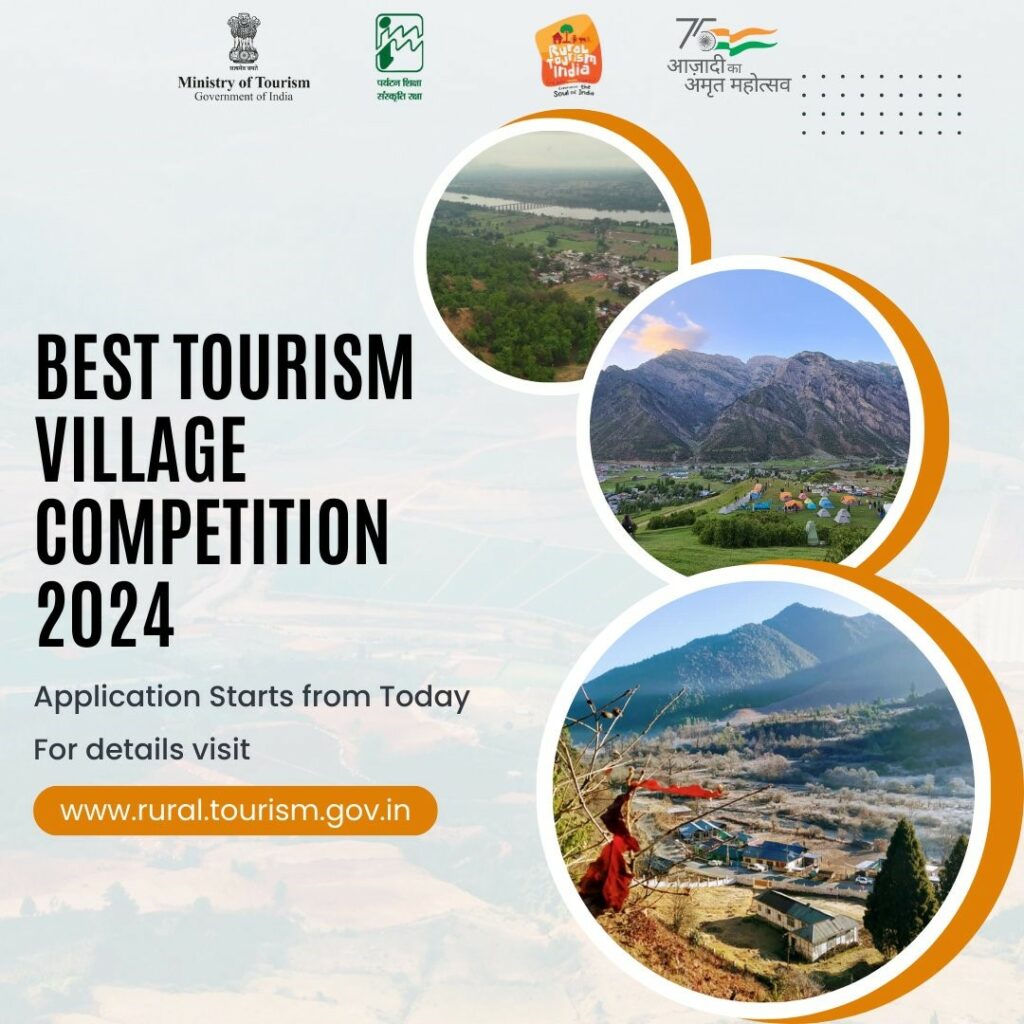
- To map the potential of rural tourism, the Ministry of Tourism has launched the Best Tourism Village Competition and the Best Rural Homestay Competition.
- In the first edition, 795 villages across India applied, and 35 villages were recognized as the Best Tourism Villages of India.
- These villages were analyzed from multiple perspectives to draw out best practices and models, which will be shared with other villages for replication and development.
Global Recognition
- India has gained international recognition for its rural tourism efforts.
- In 2021, a village from Telangana state was recognized as the Best Tourism Village by the United Nations World Tourism Organization.
- In 2023, another village from Gujarat state received the same recognition.
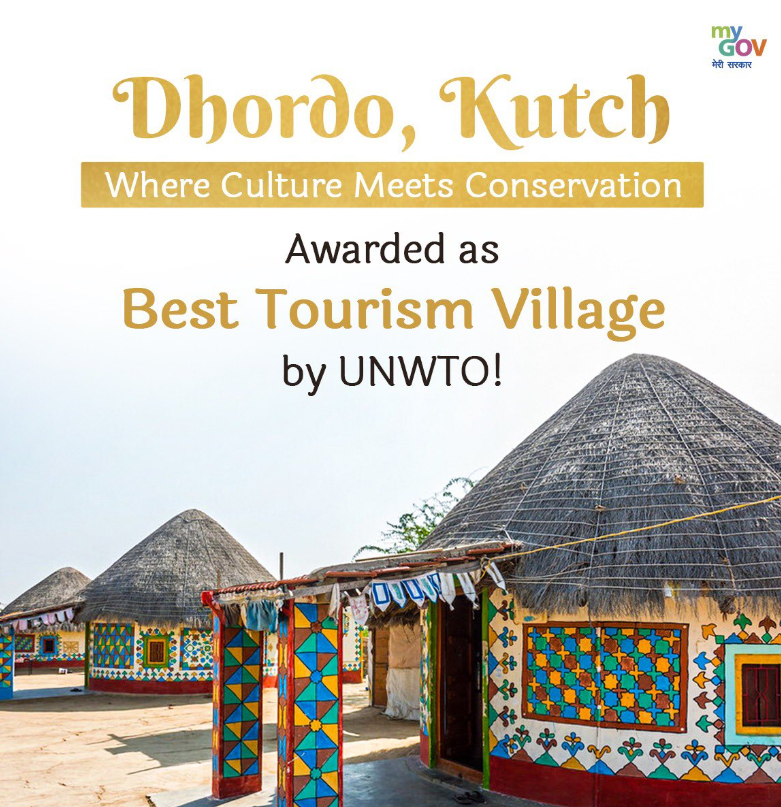
Vibrant Village Program
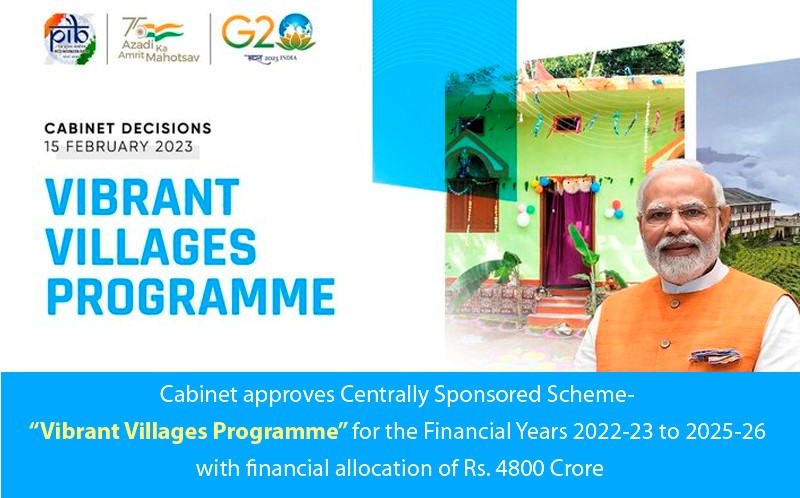
- The Government of India has initiated the Vibrant Village Program to holistically develop villages in border areas.
- This program aims to raise living standards, upgrade infrastructure, increase access to healthcare and education, and foster economic growth in border communities.
- Key areas of development include connectivity with all-weather roads, drinking water, 24×7 electricity (with a focus on solar and wind energy), and mobile and internet connectivity.
Community Reinforcement
- To increase awareness and understanding of rural tourism, the Ministry of Tourism is implementing capacity-building initiatives among various stakeholders.
- The government aims to establish Capacity Building Resource Centers at the National, State, and Cluster levels.
- These centers will serve as platforms for stakeholders, facilitating knowledge exchange and fostering interaction among practitioners, educational institutions, government agencies, and volunteers.
- They will also act as repositories for tourism knowledge.
Conclusion
- Rural tourism plays a pivotal role in fostering rural development, providing a range of benefits and avenues for growth.
- It promotes economic and social development, supports local art and crafts, and aligns with national initiatives to create a self-reliant and locally supported economy.
- The strategic initiatives and programs put in place by the Government of India are crucial in positioning rural tourism as a significant contributor to the nation’s development.
- These efforts are vital in elevating India’s rural tourism on a global level, ensuring sustainable growth and community empowerment.
2. Redefining tourism: festivals, cuisine, and music of northeast India
Overview of Northeast India’s Cultural Diversity
- The Northeastern Region of India comprises over 200 distinct tribal and non-tribal ethnic communities, each with its unique culture and traditions.
- This diversity makes the region a prime interest for anthropologists, with human history in the area dating back to the Early Stone Age.
- The racial composition includes Mongoloids, Aryans, pre-Dravidians, Eurasians, Australoids, and others, creating a rich cultural tapestry.
Festivals and Cultural Celebrations

Rongali Bihu festival, Assam
- Festivals in Northeast India are vibrant, showcasing colorful folk dances, traditional music, and cuisine, which attract tourists and bring economic benefits to the communities.
- These celebrations often revolve around the agricultural cycle, marking significant events like sowing and harvest seasons.
- There has been a notable increase in tourist interest in recent years, specifically to witness these cultural festivals.
- Some prominent festivals include the Rongali Bihu festival in Assam, the Chapchar Kut festival in Mizoram, and the Wangala festival in Meghalaya.
Shift in Tourism Trends
- Traditionally, tourism in Northeast India focused on wildlife sanctuaries and natural attractions.
- Improved security conditions and a shift towards ethnic and cultural resources have redefined the region’s tourism potential.
- Factors contributing to this shift include better security, a decline in negative publicity, and increased community participation in promoting tourism.
- The Internet and digital media have enhanced information sharing about the region’s cultural richness, attracting tourists seeking authentic experiences.
Prominent Ethnic Festivals
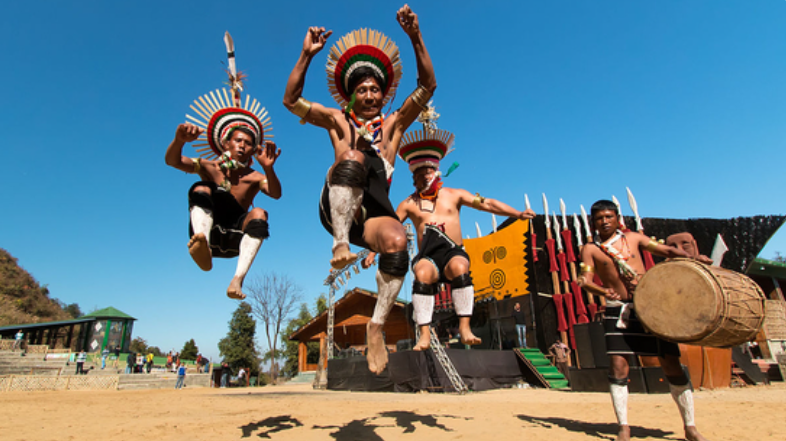
Hornbill Festival
- Not all ethnic communities have effectively promoted their cultural traits and festivals for tourism.
- Standout festivals include Rongali Bihu in Assam, celebrated with music, dance, and Assam silk fabrics, particularly at Srimanta Sankaradeva Kalakshetra in Guwahati.
- The Chandubi Festival showcases Rabha tribe music, dances, and cuisine by Chandubi Lake in January.
- The Jon-Beel Mela in Jagiroad offers traditional food and fabrics and has become a tourist attraction.
- The Karbi Youth Festival, initiated fifty years ago, promotes Karbi culture as a tourism activity.
- Nagaland’s Hornbill Festival, launched in 2000, attracts hundreds of tourists annually with colorful folk dances, music, and food from seventeen tribes.
- Arunachal Pradesh’s Lossar festival of the Monpa tribe features colorful mask dances in February.
- Mizoram’s Chapchar Kut festival in March, celebrating the completion of jhum operations, is famous for the thrilling Bamboo Dance.
- Nagaland’s Sekrenyi and Moatsu festivals, held in February and May respectively, are gaining popularity for their cultural significance and unique cuisine.
- Meghalaya’s festivals like Nongkrem, Shad-Suk-mynsiem, and Wangala, along with the Cherry Blossom Festival in November, attract both traditional and modern enthusiasts.
Impact on Tourism
- Ethnic festivals have become a significant tourism trend, drawing both domestic and foreign tourists.
- These festivals offer a glimpse into the diverse cultures and traditions, contributing to the economic well-being of local communities.
- Traditional dances, music, cuisine, and unique cultural practices highlight the region’s cultural richness and diversity.
- Local entrepreneurs are developing new tourism products, like the Mawphlang Sacred Groves in Meghalaya, to enhance tourist experiences and promote cultural heritage.
- Younger tourists are increasingly interested in modern events like the Cherry Blossom Festival in Shillong, showcasing the region’s blend of tradition and modernity.
Music and Cultural Celebrations
- Shillong, known as the Rock Capital of India, is famous for its locally crafted guitars and talented guitarists.
- Celebrations during Bob Dylan’s birthday draw large crowds, highlighting the city’s musical culture.
- The Ziro Music Festival in Arunachal Pradesh combines traditional Himalayan music with performances by renowned bands.
- Majuli, the world’s largest river island, hosts ethnic festivals and music events like the Raas Festival in November, showcasing Vaishnavite culture.
- Majuli’s Ali-ai-Lrigang festival in April features the Mising tribal community’s traditional Oinatom songs.
- The Mon-geet festival in mid-January celebrates music, culture, and culinary traditions on the banks of the Brahmaputra River.
Unique Cuisine

Bamboo Shoots
- Ethnic food has become increasingly popular among tourists in recent decades.
- Modern tourists, especially the younger generation, seek to explore diverse culinary traditions, moving beyond standard European or Indian fare.
- Each district and tribe offers its unique cuisine, making the region a hub for food festivals.
- Homestay facilities have become popular, allowing tourists to dine with host families and experience authentic ethnic food.
- There is a growing interest among tourists to immerse themselves in the culture, music, and culinary traditions of local communities.
- Many tourists prefer longer stays, often choosing to live with communities to learn more about their way of life.
Conclusion
- The Northeastern Region of India, with its rich cultural diversity and unique traditions, has seen a significant shift in tourism trends.
- Festivals, music, and cuisine are central to attracting tourists, providing economic benefits to local communities.
- Improved security and digital media have played crucial roles in redefining the region’s tourism potential.
- Understanding and promoting the region’s cultural richness can further enhance its appeal to tourists and contribute to sustainable economic growth.
3. Amenitisation of Rural India for Nature Tourism
Introduction to Rural Tourism in India
- Skepticism and Untapped Potential: Despite its importance, Rural Tourism in India is viewed with skepticism by both rural communities and prospective tourists. Consequently, its potential remains largely untapped compared to other countries where it is well-established.
- Lack of Amenities: In India, there is a lack of recognition for the need to provide enabling amenities in villages, leading to waning interest. This process, known as ‘Amenitisation’, involves multi-stakeholder engagement rather than just policy interventions.
Rural India and Nature Tourism
- True Potential: The true potential of tourism in India lies in rural areas, characterised by open spaces, small settlements, farms, and abundant nature.
- Authentic Experiences: Rural tourism offers opportunities for authentic experiences rooted in folk culture, contrasting with urbanised environments.
- Impact of Urbanization: Urbanizing rural areas for tourism would strip away the natural beauty and cultural authenticity that attract visitors. Artificial interventions like fountains and disco lights cannot replicate the simple charm of nature walks.
- Custodian of Nature: Rural India serves as the custodian of nature, and urbanisation threatens to diminish its natural beauty.
- Economic Benefits: Tourism is an economic boon for rural India but requires maintaining the pristine beauty of nature through amenitisation. Rural India offers unique experiences appealing to domestic, urban, and foreign travelers.
- Home Stay Concept: The Home Stay concept in India has potential for expansion but lacks comprehensive packaging and professional upkeep. Skills training is needed to provide a wholesome experience for value tourists, including accommodation maintenance, sanitation, and service quality.
- Community Engagement: Community engagement is essential to address socio-cultural complexities and gender roles in rural tourism. Most Home Stay entrepreneurs come from lower and medium-income groups, requiring strategic intervention for sustainable micro-entrepreneurship models.
Characteristics of Rural Tourism
- Definition and Characteristics: According to the World Tourism Organization, rural tourism is characterised by low population density, agricultural landscapes, and traditional social structures.
- Sustainable Development: In India, rural tourism promotes sustainable development while preserving cultural identity and social values. It serves as a key solution to urban migration by providing entrepreneurship-based job opportunities in rural areas.
- Successful Models: Bhutan’s successful community-based tourism model demonstrates economic benefits for village communities, with direct sales of farm products and professional training. Innovative tourism initiatives like Farm Tourism offer hands-on agricultural experiences and traditional cooking in village settings.
- Nature Walks: Nature Walks in villages provide authentic rural experiences without artificial suppression of natural scents. Volunteer Tourism allows tourists to contribute to rural communities through teaching, artwork, or agricultural assistance, fostering social bonding and community engagement.
Environmental Challenges and Rural Tourism
- Sustainable Lifestyles: Rural tourism promotes sustainable lifestyles, discouraging excessive urban resource consumption. Urgent action is needed to address climate change vulnerabilities in the Himalayan Mountain range, highlighted at the Conference of the Parties 28.
- Potential in the Himalayas: Rural tourism has significant potential in the Himalayan region, covering around 12.56% of India’s total area. Integrating rural tourism with the National Mission for Sustaining the Himalayan Ecosystem policy is crucial for sustainable development.
- Climate Goals: India aims for net-zero emissions by 2070, with a focus on enhancing forest cover. Rural tourism serves as a solution to low-carbon development, addressing pollution and carbon dioxide removal while harnessing green resources.
Amenitisation in Rural Tourism
Affirmatory Amenities
- Access to Healthcare: Prompt access to healthcare services, especially for emergencies, is crucial in remote villages.
- Sanitation and Waste Management: Effective waste management and sanitation facilities are essential for maintaining cleanliness and hygiene.
- Access to Safe Potable Water: Ensuring access to safe drinking water prevents health issues among visitors.
- Green Power: Utilising renewable energy sources like solar power promotes environmental sustainability.
- Street Lighting: Adequate street lighting enhances safety and security, especially during nighttime.
- Smart Security Solutions: Implementing smart security measures provides additional safety for tourists.
Supportive Amenities
- Digital Services: Access to digital services ensures connectivity and convenience for tourists.
- Travel Connectivity: Improved travel connectivity facilitates access to remote locations.
- Explicitation of Restrictive Practices: Educating tourists about local sensitivities helps ensure compatibility and respect.
Value Adding Amenities
- Digital Skill Set: Enhancing digital literacy among village communities enables effective communication and marketing.
- Hospitality Skill Set: Developing hospitality skills among hosts ensures professional treatment of guests.
- Village Kutir Udyam: Promoting local artisanal products and activities enhances the tourist experience and provides additional income to villagers.
- Local Community Connect: Engaging with local community groups offers tourists unique cultural experiences and opportunities for participation in social activities.
Conclusion
- Multi-Stakeholder Engagement: The success of rural tourism in India depends on a multi-stakeholder approach to amenitisation, involving policy interventions, community engagement, and strategic development.
- Preserving Authenticity: It is essential to preserve the natural beauty and cultural authenticity of rural areas to attract and retain tourists.
- Economic and Environmental Benefits: By addressing the challenges and leveraging the potential of rural tourism, India can achieve sustainable development goals, support local economies, and promote environmental conservation.
4. Postal Heritage: Converting Postal heritage into Tourist Attractions
Ancient to Modern Evolution:
- India’s postal history dates back to ancient times, with the modern postal system established by the British in the 19th century.
- Post offices, mail trains, and stamps played a crucial role in communication.
Heritage and Restoration:
- The Postal Department manages 44 heritage buildings and over 350 pre-1939 structures.
- Collaborating with organizations like INTACH and CPWD, efforts are being made to restore these structures and promote tourism.
Tourism Trends and Colonial Heritage
International Tourism:
- India attracts 8-10 million international tourists annually, primarily from the Asia Pacific region.
- Top destinations for foreign tourists include Gujarat, Maharashtra, West Bengal, Delhi, and Uttar Pradesh.
- Over 80% of international tourists visiting India come from Bangladesh, the European Union, United States of America, and United Kingdom.
Domestic Tourism:
- Domestic tourism in India sees a massive turnout of 600-700 million travelers each year.
- Popular domestic destinations include Uttar Pradesh, Tamil Nadu, Andhra Pradesh, Karnataka, and Gujarat.
Colonial Heritage Sites:
- Historical sites from the colonial era attract approximately 3.5 million tourists annually.
- The British colonial period established key institutions like railways and postal services, shaping India’s infrastructure.
- Heritage buildings from the colonial period are significant landmarks of India’s history and architectural legacy.
- Efforts to preserve and restore these buildings are ongoing, highlighting their historical and architectural importance.
Historical Background of the Indian Post Office
Pre-1854 Postal Services:
- Before 1854, the Post Office in India consisted of disparate services in different provinces with separate rules and postage rates.
- Regular mail services were limited, with district collectors managing local post offices.
Post Office Act of 1854:
- A Commission in 1850 evaluated postal services, leading to the Post Office Act of 1854.
- This act established the Post Office as an Imperial Department under a single head, the Director-General.
Heritage Post Office Buildings
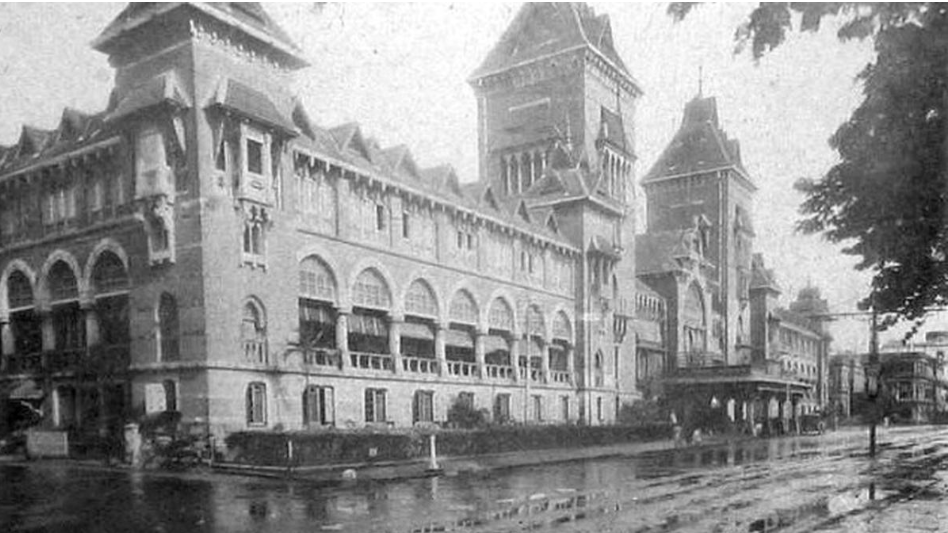
General Post Office, Madras (Chennai)
General Post Office, Calcutta (Kolkata):
- Built in 1868 from designs by Mr. Grenville.
- Located at the site of the first Fort William.
General Post Office, Bombay (Mumbai):
- Constructed in 1910 by Mr. James Begg.
- Inspired by the Gol Gumbaz of Bijapur.
General Post Office, Madras (Chennai):
- Opened to the public in 1885, designed by Mr. Chisholm.
- Located facing the sea.
Contemporary Aspects of Post Office Buildings
Significance and Architectural Styles:
- These buildings were architectural landmarks and integral parts of colonial infrastructure.
- They were designed to accommodate growing postal services with public halls and branch operations.
- Architectural styles included Indo-Saracenic, Neo-Tudor, Palladian, and Georgian.
Transformation and Use:
- Many heritage buildings have adapted to changing needs, some repurposed for modern use like museums or administrative offices, while others remain active postal facilities.
Cultural and Historical Significance:
- These buildings represent colonial-era postal infrastructure and broader cultural heritage.
- Some buildings, like Delhi GPO and Lashkar Post Office in Gwalior, are tied to significant historical events and personalities.
Preservation Efforts
Collaboration for Restoration:
- The Department of Posts works with INTACH and CPWD to restore and preserve heritage buildings.
- Efforts aim to develop these buildings as tourist attractions, showcasing their architectural and historical significance.
Way Forward for Promoting Postal Heritage Tourism
Policy Development:
- Collaborate with the Ministry of Tourism and Ministry of Culture to open heritage buildings for tourism.
Historical Documentation:
- Conduct research to compile comprehensive histories of heritage buildings.
- Display interesting facts on attractive signage, promote on social media, and include in tourist publications.
Tourism Engagement:
- Engage tourist guide guilds to include heritage buildings in regular circuits and itineraries.
Building Restoration and Accessibility:
- Restore heritage buildings to their original designs, preserving their architectural integrity.
- Open main areas to tourists and guides, freeing them from official use.
Establishment of Museums:
- Set up museums within buildings to showcase local postal history.
Revenue Generation:
- Incorporate postal heritage tourism as a revenue-generating activity.
- Fund restoration through entry tickets and souvenir sales.
Promoting India’s rich postal heritage can create tourist attractions, boost local employment, and contribute to the restoration and maintenance of historical buildings.
5. Crafting Rural Cultural traits through Tourism
Definition and Purpose of Rural Cultural Trails:
- Rural Cultural Trails are curated routes designed to showcase a rural region’s unique cultural identity.
- These trails typically feature local crafts, traditional art forms, heritage sites, and immersive cultural experiences.
- The primary purpose is to provide tourists with an authentic understanding of the region’s heritage while supporting economic growth and fostering community pride.
Components of a Successful Cultural Trail:
- Tangible and Intangible Heritage: Trails should encompass both tangible (monuments, architecture) and intangible (art forms, rituals) cultural assets.
- Thematic Narrative: A strong thematic thread should bind the diverse elements of the trail, highlighting the history of crafts, local festivals, or the connection between people and the land.
- Respectful Exploration: Visitors should engage in genuine exchanges and respect local traditions, avoiding staged performances or inauthentic experiences.
- Community Involvement: Trails should be built with and by the local community, ensuring their voices are heard, traditions respected, and benefits derived from tourism revenue.
- Accessibility: Trails should be physically accessible, offer information in multiple languages, provide signage, and train local guides to cater to diverse tourists, including those with disabilities.
- Sustainability: Management strategies should be in place to safeguard the natural environment and cultural fabric of the community, including limiting visitor numbers and promoting environmentally conscious practices.
Examples of Cultural Trails:

Rajasthan’s Block Painting
- Odisha’s Danda Nata Trail: Showcases the dynamic folk dance of Danda Nata, part of Ganjam’s rich tradition, performed to honor Lord Krishna, Lord Shiva, and Goddess Kali.
- Madhya Pradesh’s Living Traditions Chanderi Trail: Takes visitors through the history and techniques of Chanderi weaving, highlighting artisans’ skills and intricate motifs.
- Rajasthan’s Block-Printing and Manganiyar Music Trail: Offers experiences of witnessing block-printers at work and listening to Manganiyar musicians playing tunes passed down through generations.
Thinking Beyond the Obvious Scope of Tourism
Lighthouse Tourism:
- Lighthouses hold historical, architectural, and cultural significance, offering unique experiences for visitors.
- Countries like the United States and India have recognized their tourism potential and developed initiatives to promote lighthouse tourism.
- India’s vast coastline presents opportunities to attract tourists interested in maritime heritage, architecture, and coastal landscapes.
- Examples include the ancient port of Poompuhar in Tamil Nadu, Kaup Lighthouse in Karnataka, and Alappuzha Lighthouse in Kerala.
Other Untapped Tourism Opportunities:
- Industrial Heritage Sites: Former industrial sites can offer insights into a region’s industrial history. Regions like Jamshedpur and Raniganj in India could develop industrial heritage tourism initiatives.
- Agricultural Tourism: Rural areas with vibrant agricultural landscapes can offer immersive experiences for tourists. States like Punjab, Maharashtra, and Karnataka could promote agricultural tourism by offering farm stays and agritourism experiences.
- Dark Sky Tourism: Areas with minimal light pollution are ideal for stargazing and astronomy tourism. Rural regions in India, such as Ladakh, Spiti Valley, and rural Rajasthan, offer excellent opportunities for dark sky tourism.
Engaging Local Communities for Sustainable Rural Tourism
Alignment with Local Values:
- Ensuring that tourism initiatives align with local values and needs fosters a sense of ownership and responsibility within the community.
- Preservation of cultural heritage is essential for revitalising traditions and supporting local artisans.
Environmental Conservation:
- Promoting responsible environmental practices, such as waste management and sustainable transportation, helps safeguard rural landscapes and biodiversity.
Capacity Building and Empowerment:
- Involving locals in capacity-building initiatives empowers them with skills for employment and entrepreneurship, contributing to inclusive growth.
Equitable Distribution of Benefits:
- Ensuring an equitable distribution of benefits from tourism activities reduces disparities and promotes inclusive growth within the community.
Cultural Exchange:
- Cultural exchange initiatives foster mutual understanding and respect between tourists and hosts, enriching both parties’ experiences.
Comprehensive Planning and Monitoring:
- Long-term sustainability requires comprehensive planning, stakeholder collaboration, and monitoring of impacts to address challenges and maximise positive outcomes.
Conclusion
By implementing these strategies, rural tourism can become a catalyst for positive change, preserving culture, supporting communities, and conserving the environment. Ongoing collaboration and commitment to sustainability are essential for rural destinations to thrive and offer authentic experiences benefiting both visitors and residents. Promoting India’s rich cultural heritage through thoughtfully crafted cultural trails not only creates tourist attractions and boosts local employment but also contributes to the restoration and maintenance of historical buildings across towns and cities.
6. Blooming J&K Tourism: Towards Growth and Development
Impact of the G-20 Summit:
- The G-20 Summit held in Kashmir in 2023 transformed the tourism landscape of Jammu and Kashmir by showcasing its natural beauty and rich culture.
- Sectors such as hospitality, transportation, and local businesses experienced a financial boost, which also spurred investments in long-term infrastructure development.
- The successful hosting of the summit left a lasting impact on Jammu and Kashmir’s tourism industry, providing the region with global recognition.
Homestays: A Grassroots Movement:
- The homestay industry in Jammu and Kashmir has experienced rapid growth, with 1,485 homestays and 13,000 rooms registered across the Union Territory.
- This grassroots movement offers lodging options and authentic cultural experiences to visitors, contributing to the region’s tourism sector.
- The recent grant of industry status to the tourism sector has attracted significant investments, with homestay initiatives proving instrumental in accommodating the increasing flow of tourists.
Heritage Preservation through Homestays:
- Traditional houses and wooden cottages are being transformed into homestays, preserving architectural heritage while offering unique lodging experiences.
- This transformation breathes new life into historical structures, safeguarding the rich cultural legacy they represent.
- Careful preservation of elements like antique furniture and traditional design ensures the authenticity of these historical homes remains intact.
Religious Pilgrimages: A Spiritual Sojourn:
- Religious pilgrimages, such as the Shri Mata Vaishno Devi pilgrimage and the Amarnath Yatra, have significantly contributed to the tourism surge in Jammu and Kashmir.
- The region boasts a rich tapestry of religious diversity, featuring historic temples, shrines, and mosques that attract pilgrims and tourists alike.
- Religious tourism not only contributes to the local economy but also fosters cultural exchanges, bringing together individuals from different regions and backgrounds.
Sustainability in Tourism: A Paradigm Shift:
- Jammu and Kashmir’s tourism sector focuses on balancing growth with environmental conservation and socio-cultural responsibility.
- Sustainable tourism efforts include minimising the environmental impact of tourist activities through waste management, energy conservation, and promoting eco-friendly transportation options.
- Community involvement and empowerment are integral, with initiatives launched to engage local communities in tourism-related activities and ensure they benefit from the industry.
Off-the-Beaten-Path Homestays: Unveiling Hidden Treasures:
- Homestays in lesser-explored locales offer immersive travel experiences away from tourist hotspots.
- Authentic interactions with local communities allow travellers to delve into the cultural tapestry and traditions of the region, going beyond scripted tourist itineraries.
Trekking Trails:
- Jammu and Kashmir offers exceptional trekking trails amidst the challenging terrains of the Himalayas, attracting adventure enthusiasts worldwide.
- Popular destinations like the Great Lakes Trek and the Tarsar Marsar Trek provide opportunities to explore breathtaking landscapes up close.
- Serene yet adventurous settings like the Dal Lake are ideal for kayaking and canoeing, adding to the variety of experiences available to visitors.
Winter Sports and Paragliding:
- The snow-clad mountains of Jammu and Kashmir are a playground for winter sports enthusiasts, particularly in Gulmarg, known for its skiing and snowboarding facilities.
- State-of-the-art amenities, such as ski resorts and cable cars, enhance the overall winter sports experience, making Jammu and Kashmir a premier destination for these activities.
- Events and festivals like the Gulmarg Winter Festival and Khelo India Winter Games are organized to showcase the region’s adventure tourism potential and attract a global audience.
Conclusion:
- Jammu and Kashmir’s tourism sector is experiencing unprecedented growth, marked by a 155% increase in tourist arrivals and significant events like the G-20 Summit.
- As Jammu and Kashmir’s tourism sector thrives, its strategic initiatives and sustainable practices highlight its potential as a top global destination. With a blend of heritage preservation, religious significance, and adventure activities, the region promises unparalleled growth.
7. Rural Fairs and Festivals
International Tourism Recovery:
- According to the UNWTO World Tourism Barometer 2024 report, international tourism has recovered 88% of pre-pandemic levels and is expected to fully recover by the end of 2024.
- India tourism statistics for 2023 indicate that while foreign tourist visits stood at 8.59 million, bulk tourism activity came from domestic tourism with 1731.01 million domestic tourist visits in 2022.
- The tourism sector is a significant source of foreign exchange earnings and plays a crucial role in economic development and employment generation.
The 5 A’s of Tourism Destination Development
Attractions:
- Attractions are features that draw tourists to a destination, including natural landscapes, historical sites, cultural events, and recreational activities.
Accessibility:
- Accessibility refers to the modes of transport available to reach the destination, including air, road, rail, and waterways.
Accommodation:
- Accommodation entails providing lodging options for tourists, ranging from hotels and resorts to homestays and guesthouses.
Amenities:
- Amenities encompass the facilities and services available at the destination, such as restaurants, shopping centres, medical facilities, and recreational facilities.
Activities:
- Activities include various pursuits available to tourists at the destination, such as sightseeing, adventure sports, cultural experiences, and shopping.
Importance of Fairs and Festivals in India
Economic Importance:
- Traditional fairs and festivals create linkages between tourism businesses and local communities, contributing to poverty reduction and enabling active participation in product development.
Socio-cultural Importance:
- Indian festivals hold socio-religious significance and promote social bonding across religions, countering the effects of globalisation and westernisation.
MICE and Roots Tourism:
- Festivals cater to the Meetings, Incentives, Conferences, and Exhibitions/Events (MICE) market, promoting tourism related to work, profession, and business.
- Roots tourism through festivals connects individuals with their cultural heritage and ancestral roots.
Adventure and Rural Tourism:
- Festivals promote adventure and rural tourism by showcasing niche products like adventure sports and rural experiences, reducing seasonality in tourism.
Heritage Preservation:
- Festivals reinvigorate heritage sites and traditions, preserving cultural legacies and attracting heritage tourists.
Examples of Festivals in India

Tulip Festival
Pinjore Heritage Festival:
- Organised in Haryana, this festival showcases the culture and tradition of the region.
Kochi-Muziris Biennale:
- Held in Kochi, this art exhibition and festival is the largest of its kind in South Asia, promoting cultural exchange and artistic expression.
Hornbill Festival:
- Celebrated in Nagaland, this festival aims to preserve and revive the uniqueness and richness of Naga heritage.
UP Mango Festival:
- Organised by the Awadh mango growers’ association, this festival promotes mango cultivation and tourism in Uttar Pradesh.
Maharashtra Vineyard Tourism:
- Maharashtra capitalises on vineyard tourism, promoting wine tourism as a growing area of interest.
Tulip Festival:
- Held at the Indira Gandhi Memorial Tulip Garden in Srinagar, this festival showcases the range of flowers during the onset of spring.
Authentic Dance Forms:
- Festivals like Onam feature authentic dance forms like Kathakali, promoting cultural authenticity and traditional arts.
Wellness and Sports Tourism:
- International Yoga Festival promotes wellness tourism, while sports festivals like Khelo India promote physical fitness and well-being.
Conclusion
- Festivals contribute to the economic prosperity, social harmony, and overall well-being of communities.
- They create opportunities for cultural exchange, promote tourism, and enhance the image of destinations.
- If managed effectively, festivals can attract visitors, foster community engagement, and showcase the diversity of cultures, thereby aiding in destination promotion and sustainable tourism development.
8. Different Hues of Rural Tourism
Overview:
- Tribal tourism in India offers a glimpse into the unique traditions and vibrant cultures of indigenous communities spread across the country.
- It provides an opportunity to witness age-old customs, captivating dances, and exquisite handicrafts that have been passed down through generations.
Key Features:
- Rich Cultural Heritage:
- Tribal tourism allows visitors to explore the customs, rituals, and folklore of various tribal communities, providing insights into their rich cultural heritage.
- Traditional Crafts:
- Tourists can witness skilled artisans creating handicrafts, pottery, textiles, and other traditional artwork, showcasing the artistic prowess of tribal communities.
- Sustainable Practices:
- Visitors can learn about eco-friendly practices and traditional knowledge used by tribal communities for sustainable living, including methods of agriculture, conservation, and resource management.
Agricultural Tourism
Overview:
- Agricultural tourism focuses on showcasing rural farming practices, agro-based activities, and agrarian lifestyles, providing visitors with an immersive experience in agricultural settings.
Key Features:
- Farm Experiences:
- Agricultural tourism offers opportunities for visitors to engage in farm activities such as harvesting, planting, animal care, and other agricultural tasks, allowing them to experience rural life firsthand.
- Farm-to-Table Dining:
- Tourists can enjoy fresh and organic meals prepared from locally sourced ingredients, often directly from the farm, promoting farm-to-table dining experiences that highlight the connection between food production and consumption.
- Educational Tours:
- Agricultural tourism provides educational tours where visitors can learn about different crops, irrigation methods, sustainable agriculture practices, and the role of technology in modern farming.
Art and Culture Tourism
Overview:
- Art and culture tourism in rural areas of India celebrates the artistic heritage, traditional performances, and cultural diversity of various communities, offering immersive experiences for travellers.
Key Features:
- Cultural Festivals:
- Visitors can experience colourful festivals, folk dances, music performances, and theatrical shows that showcase the vibrant cultural traditions of rural India, providing insights into local customs and rituals.
- Artisanal Crafts:
- Art and culture tourism allows tourists to explore local markets and artisan workshops where handmade crafts, textiles, pottery, and traditional artwork are showcased, providing opportunities for cultural exchange and supporting local artisans.
Conclusion
- Tribal, agricultural, and art and culture tourism offer diverse and immersive experiences for travelers seeking to explore the rich heritage and traditions of rural India.
- These tourism initiatives not only promote cultural exchange and economic development but also foster sustainable practices and preserve traditional knowledge for future generations.
- By engaging with indigenous communities, experiencing rural life, and supporting local artisans and farmers, tourists can contribute to the preservation and promotion of India’s cultural diversity and heritage.



